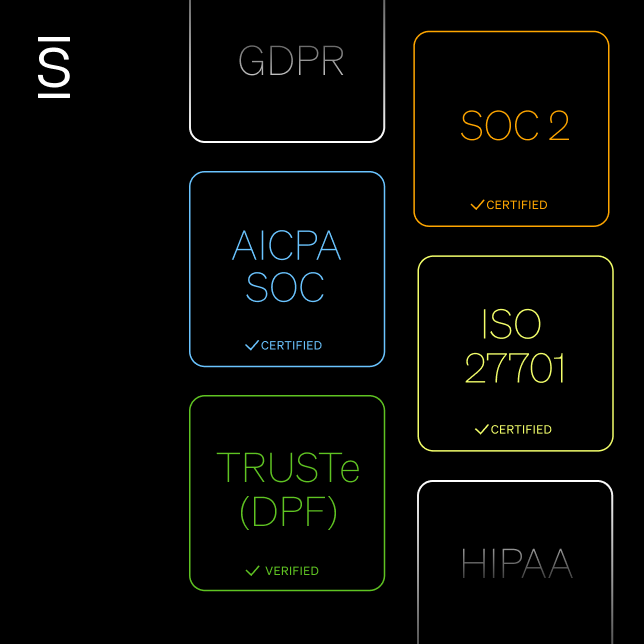TikTok. Jokes written by computers. Empty offices in downtown Denver. What do these things have to do with business communications?
Everything.
Today’s business communications tools and apps are agile, engaging, and smarter than ever thanks to huge changes in technology and rapidly evolving work trends.
How are these new technologies changing the face of business communications? Here are the top 10 current trends in business communication you don’t want to miss.
What are the trends in business communications?
1. Smarter intranet software
Corporate communication systems are using cutting-edge tech to give employees the right info, exactly when they need it, in a platform they’ll actually want to use.
How? By leveraging the same principles that made social media platforms what they are today.
Adaptive personalization recognizes the info employees want and need without those traditional, clunky filters or hard coding. Today’s modern intranet software shows each employee a uniquely tailored content feed using factors like:
- business function
- tenure at the company
- location
- recent activity on the platform
- what’s trending on the intranet today
- and, of course, anything flagged for critical distribution
Better yet, smart intranet keeps up with older, stale content that isn’t being read anymore and flags it for removal. It practically maintains itself, revolutionizing the field of business communications.
2. Predictive analytics
Adaptive personalization is just one aspect of a broader tech known as predictive analytics. It’s a subsection of machine learning that focuses on predicting behavior, preferences, and trends by analyzing historical data.
In a nutshell, predictive analytics is why TikTok was the most downloaded app of 2021, with a whopping 656 million.
Yep, you read that right. 656 million downloads. In one year.
Business communications are using that same kind of artificial intelligence (AI) to change the game, predicting the information customers and employees want — often before they know what they want themselves.

Today’s business communications systems are ready to offer up the info they need through predictive content algorithms as well as smart search capabilities inside their intranet software.
3. Natural language search & chatbots
A robot walks into a bar.
The bartender asks, “What can I get you?”
The robot says, “I need something to loosen me up.”
So the bartender hands it a screwdriver.
What’s unusual about the joke isn’t so much the joke itself, but the fact that a computer wrote it, proving just how far we’ve come in the world of AI.
Computers are starting to understand us. If you’re a Westworld fan, the thought might feel unsettling, but those who work with chatbots and natural language search algorithms are getting more excited by the prospects every day.
Marketing teams use chatbots for e-commerce. Help desks use them as a first line of support in customer communication. Usually, they’re programmed with a set of predetermined responses: first, ask these three questions; if the answer is number one, say this next.
But the smarter they get, the more they can navigate the information highway for us, like when Siri or Alexa plays us a song or predicts the afternoon weather.
Today’s employee intranets are using the same technology to take intranet searches to a whole new level, helping employees find what they need quickly and effectively.
4. Treating employees like customers
In the information age, we’re more likely to be inundated with data than not having enough. It’s just as true of business communications as it is everything else, if not more so.
The trick is to give employees the information they need without overwhelming them.
Part of making that happen goes back to predictive analytics, so employees only see the information they care about. But there’s another important key to effective communication — choosing the right channel for the right message.
Those responsible for business communications are more and more aware that key communication channels now include things like:
- instant messaging
- SMS text messages
- messaging apps
- mobile notifications
Mobile devices offer always-on connectivity. If that isn’t handled well, it becomes overwhelming. Businesses need unified communication platforms that can simplify communications for employees instead of just adding more.
Along the same lines, one of the biggest trends in communication technology is better, smarter handling of preferred communication methods like images and video.
Today’s employees are discerning customers when it comes to information, and internal comms teams are treating them that way.
5. Visual learning & communication
Speaking of video, about 40% of human nerve fibers are linked to the retina, letting our brains process images in just 13 milliseconds.
That’s some 60,000 times faster than we process text.
It’s just another reason why TikTok and YouTube are so popular — and why today’s intranet software needs to be able to process video natively.

From company retreats and webinars to videos that explain healthcare benefits, corporate communication strategy is turning to video to engage, entertain, and educate employees.
6. Interactive experiences
As powerful as images are, there’s one place where we ignore them — digital ads. In fact, we’re so flooded by them that there’s a term for how well we tune them out.
It’s called “banner blindness,” and marketers are trying anything and everything to overcome the phenomenon, luring prospects into paying attention. Quizzes, calculators, and interactive recommendations are all finding their way into the customer experience playbook.
But marketing teams aren’t the only ones feeling the sting of information overload.
Companies are seeing a similar phenomenon in the realm of corporate emails. Employees set email filters to divert group emails away from their inboxes or even delete them outright. They don’t have time to read it all and still do their day-to-day job.
To combat the problem, internal communications teams are turning to smart intranet systems that can sift through it, sending employees only what they need and want.
Look for the continued expansion of intranet integrations with the rest of your tech stack, providing critical, dynamic content on the fly.
7. Cloud-based collaboration tools
The city of Denver has so many empty downtown offices that it’s converting them to apartment units. The same story is playing out in downtown metropolitan areas across the country.
The pandemic gave employees a taste of remote work. Many of them don’t want to go back to the office — and a lot of companies are fine with that.
American Express started a work-from-home policy long before the pandemic, increasing its output by 43%. Sun Microsystems has been saving $68 million per year for more than a decade.
Those remote teams need to be able to work together, both in real-time and across multiple time zones, leading to a broad range of cloud-based collaboration tools.
Digital whiteboards run brainstorming sessions from anywhere. Project management software manages workflows. And intranet software uses digital communication to create a unifying culture and bring distributed teams together.
8. Video conferencing
What started with consumer apps like FaceTime and WhatsApp took the business world by storm during the pandemic. Zoom exploded into the stock market spotlight as companies adopted the video conference software in droves.
Today, the bubble might have deflated, but the trend is still going strong. Video calls have largely replaced phone calls as the preferred way to do business for many companies.
Given that trend, plenty of eyes are watching the rebranded Meta, which claims that “the future of connection will be in 3D.”
Does that mean you’ll be holding virtual reality (VR) meetings before the end of the year? Maybe, maybe not. But even if you did, they wouldn’t be in true 3D. After all, your computer doesn’t have a built-in 3D camera. The tech just isn’t there yet.
Still, everyone’s working on it in a big way, with Meta, Google, and Apple all throwing their hats in the ring. The Oculus VR headset is already out and affordable for the average US family, and rumors are flying about future releases of augmented reality (AR) glasses.
Forward-thinking businesses don’t need to run out and buy everyone a headset today, but you’ll want to keep an eye on the VR and AR industries as they develop over the next few years.
9. Crowd-sourced content
Crowd-sourcing is what they call it when organizations find ingenious ways to build big things through small contributions from a lot of different people.
If you’re Wikipedia, that big thing is Wikipedia itself — a global database of information contributed by the public, with millions of articles that span more than 2 decades.
Universities have used crowdsourcing to study creative, unexpected ways to use technology. Google is using it to map the planet. That’s a pretty big crowd.
Today, crowd-sourcing has come to business communications, turning managers into widespread leaders and employees into social media advocates.
Look for more innovations in crowd-sourcing as large enterprises discover new ways to leverage one of their greatest assets — their workforce.
10. Distributed communications management
When organizations need to make company-wide announcements that span the globe, a centralized source of communications makes sense.
But that doesn’t work for every kind of message.
Companies also have a need for regional and local communications. They might have news for everyone in a certain role. Or for every new hire.
Corporate communications platforms are bridging the gap, offering new ways for teams to communicate, collaborate, and share key knowledge.
Today’s intranet software helps organizations create a cohesive culture while opening up intranet management and communication across departments in a way that’s much more scalable — without bogging down the IT department.
Final thoughts
Changes in technology are coming in fast and furious, transforming business communications to meet the needs of work trends that are evolving just as quickly.
That pace of change is here to stay. Businesses need intranet solutions that can keep up while making the information age easier to navigate.
Want to see how a cutting-edge intranet solution can simplify internal communications and increase employee engagement? Request a demo today.




















